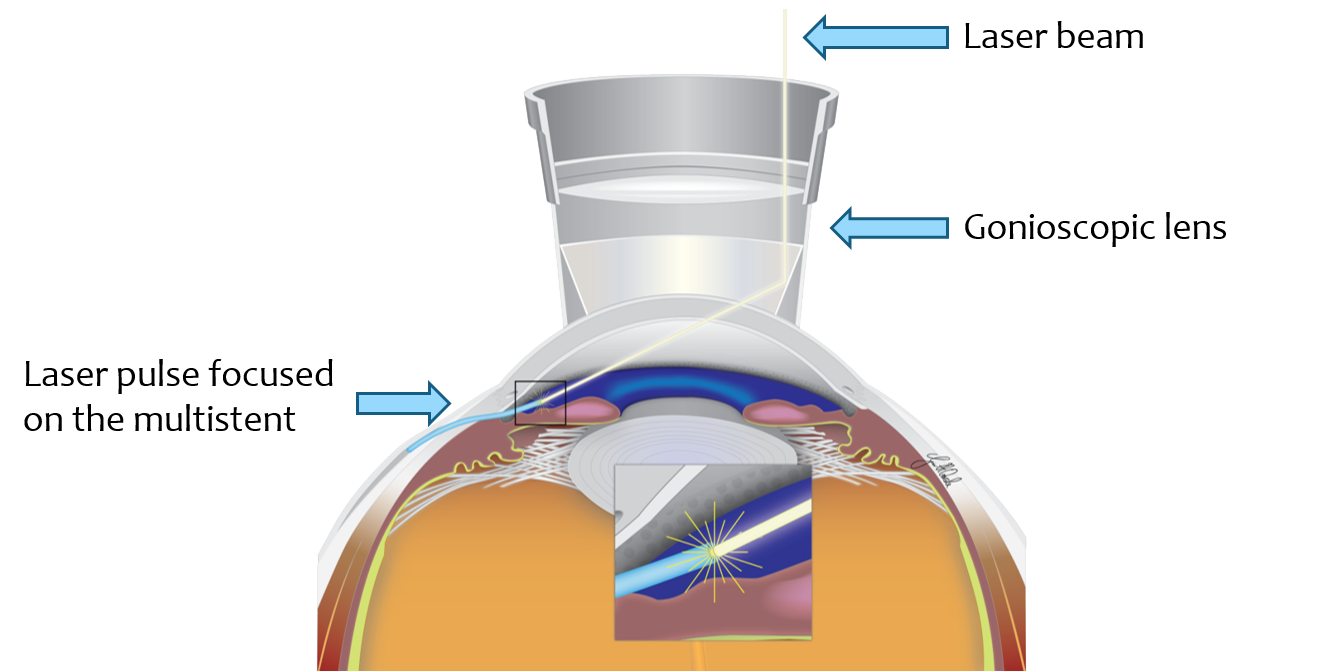
Novel MIGS glaucoma device with multiple channels
BACKGROUND
Improved management of glaucoma
Glaucoma is a multifactorial optic neuropathy characterized by progressive damage to the optic nerve, which results in the loss of retinal ganglion cells. Because increased intraocular pressure (IOP) is an important risk factor, treatment is directed at lowering the IOP. This typically involves using one or more eye drops, which reduce the aqueous humour production in the eye. Alternatively, laser and various surgical procedures can be applied to increase the aqueous humour efflux. In recent years, the introduction of minimally invasive glaucoma surgery (MIGS)-procedures have mitigated some of the complications associated with traditional glaucoma surgery. MIGS-devices may be inserted on an outpatient basis, and the procedure has fewer side effects and lower risk than traditional surgery through trabeculectomy. However, a MIGS procedure often yields suboptimal clinical effect, and continued treatment with eye drops is often necessary to maintain the target IOP.
BUSINESS OPPORTUNITY
Glaucoma market
Primary open-angle glaucoma (POAG) is the most common form of glaucoma, accounting for at least 90% of all glaucoma cases[1]. This condition is caused by progressive clogging of the trabecular meshwork in the eye, which results in increased resistance to efflux of aqueous humour, increasing the intraocular pressure. Commercially, glaucoma represents a large unmet need, with a global POAG prevalence of about 2.2%: 57.5 million people worldwide and 7.8 million people in Europe[2]. Norway has about 77,000 people with a glaucoma diagnosis[3].
TECHNOLOGY
MIGS glaucoma device
We have designed a novel MIGS device that allows for improved effect on IOP, without increasing the risk of the procedure. This is achieved through incorporating multiple channels in the novel MIGS device (as opposed to just one), for which only one is open by default. As a result, the pressure-lowering effect of the MIGS device may be up-titrated according to need by opening one or more additional channels after insertion. Notably, this technology may also be applied to existing MIGS devices, thus facilitating a potential paradigm shift of glaucoma therapy. The technology is being developed at Oslo University Hospital.

Individual channels of the MIGS device may be opened post-insertion by the application of laser energy through a gonioscopic lens – a routine procedure in most eye clinics.
INTELLECTUAL PROPERTY
- Patent pending.
[1] Glaucoma Research Foundation (GRF). Types of Glaucoma. View website
[2] Allison K, Patel D, Alabi O. Epidemiology of Glaucoma: The Past, Present, and Predictions for the Future. Cureus. 2020 Nov 24;12(11):e11686. doi: 10.7759/cureus.11686. PMID: 33391921; PMCID: PMC7769798.
[3] Lund UH, Bidonde J, Kornør H, Reinar LM, Fagerlund BC, Nguyen L, Ursin LØ, Lerner M, Robberstad B. Minimally Invasive Glaucoma Surgery (MIGS) for individuals with glaucoma. A health technology assessment. FHI. 2021. View report
Please view other licensing opportunities at Inven2 here.

